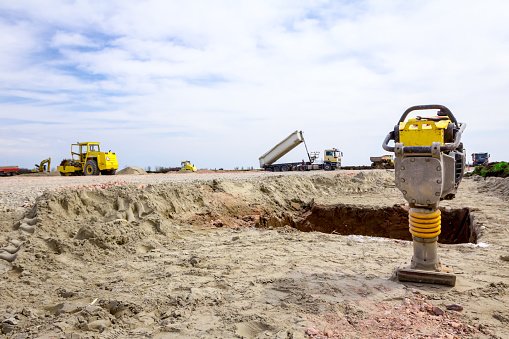How to Choose Between a Jumping Jack Compactor and a Plate Compactor
When it comes to soil compaction in construction and landscaping projects, choosing the right equipment is crucial. Two popular options are the jumping jack compactor and the plate compactor. Each has its unique features and benefits that make them suitable for different applications. In this article, we’ll explore the key differences between these two machines to help you make an informed decision.
1. Understanding the Basics
Jumping Jack Compactor
Also known as a rammer, the jumping jack compactor is designed primarily for compacting cohesive soils like clay. Its unique design allows it to deliver high-impact forces, making it effective for trench work, backfilling, and areas with limited access.
Plate Compactor
In contrast, a plate compactor features a flat, Jumping Jack Compactor, heavy plate that vibrates to compress soil and other materials. It is suitable for a broader range of applications, including asphalt, gravel, and granular soils. Plate compactors are often used for larger areas where a smooth finish is required.
2. Compaction Method
Jumping Jack Compactor
The jumping jack compactor operates with a vertical jumping action, which allows it to penetrate and compact soil effectively. This method is particularly beneficial for cohesive soils, as it can break up clumps and achieve a denser compaction.
Plate Compactor
Plate compactors utilize a vibratory motion to compact materials. This method is ideal for granular soils and asphalt, as it ensures uniform compaction across a larger area. The plate’s weight and vibration work together to settle the material effectively.
3. Application Suitability
Jumping Jack Compactor
Jumping jack compactors are best suited for confined spaces, such as trenches and tight corners. Their design allows for effective compaction in areas where a standard plate compactor may struggle. They are also excellent for compacting backfill around foundations and under pavers.
Plate Compactor
Plate compactors excel in larger, open areas. They are versatile and can be used for various applications, including compacting gravel for driveways, preparing bases for patios, and leveling asphalt surfaces. For projects that require extensive area coverage, a plate compactor is often the preferred choice.
4. Weight and Portability
Jumping Jack Compactor
Jumping jack compactors are generally lighter and more portable than plate compactors. Their compact design makes them easier to transport and maneuver in tight spaces. This portability is a significant advantage for contractors working in urban or congested areas.
Plate Compactor
Plate compactors tend to be heavier due to their larger plates and robust construction. While this added weight contributes to better compaction, it can make them less portable. However, many models come equipped with wheels or handles to facilitate movement on the job site.
5. Ease of Operation
Jumping Jack Compactor
The jumping jack compactor is relatively easy to operate, even for beginners. Its straightforward controls and ability to work in confined spaces make it a user-friendly option. However, operators may need to be cautious to avoid excessive fatigue due to the machine’s bouncing action.
Plate Compactor
Plate compactors are also user-friendly, with intuitive controls and a stable operation. They require less physical effort compared to jumping jack compactors, making them suitable for extended use. Operators can achieve consistent results with minimal training.
6. Cost Considerations
Jumping Jack Compactor
Generally, jumping jack compactors are less expensive than plate compactors. Their lower cost can make them an attractive option for small contractors or DIY enthusiasts looking to tackle specific projects.
Plate Compactor
Plate compactors tend to be a more significant investment, but they offer versatility and efficiency across various applications. For businesses involved in multiple types of projects, the higher initial cost can be justified by the machine’s capabilities.
7. Maintenance and Longevity
Jumping Jack Compactor
Jumping jack compactors require regular maintenance to ensure optimal performance. Checking oil levels, inspecting the rammer, and keeping the machine clean are essential for longevity. With proper care, they can provide reliable service for many years.
Plate Compactor
Plate compactors also require routine maintenance, including checking the engine and ensuring the plate remains in good condition. Their robust build often results in a longer lifespan when properly maintained, making them a sound investment for long-term use.
Conclusion
Choosing between a jumping jack compactor and a plate compactor ultimately depends on your specific needs and project requirements. If you’re working in tight spaces and need to compact cohesive soils, a jumping jack compactor is likely the best choice. However, if you require versatility for larger areas and various materials, a plate compactor may be the better investment. By assessing the features, applications, and costs associated with each type, you can make an informed decision that aligns with your project goals.

